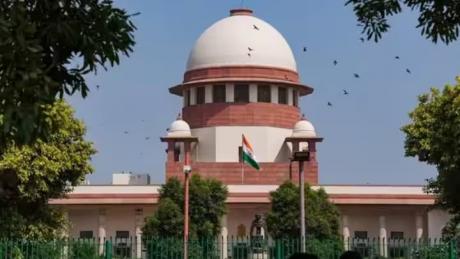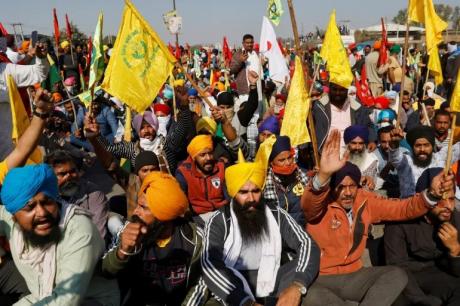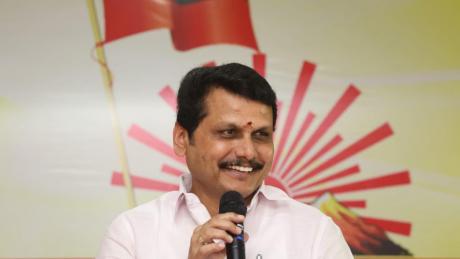Amid the COVID-19 outbreak, the ailing economy, queue of allegations, and unprecedented objections and protests against the Central government, Prime Minister Narendra Modi has unveiled the new temple of democracy as he has laid the foundation stone of the new parliament building on Thursday and along with carrying the deep-rooted heritage and legacy, the building would be carrying Modi's bid to push his vision of 'Aatmanirbhar Bharat'.
The new parliament building will be erected adjacent to the existing one, that was constructed during the British era and the Prime Minister has laid the foundation stone for the new temple of democracy nearly a hundred years after the foundation for the existing Parliament was laid by the Duke of Connaught on February 12, 1921. The Prime Minister had laid the foundation stone on Thursday afternoon and the ceremony had seen the presence of Union Ministers and priests from all religions.
Inter-faith prayer was held during the ceremony as the nation had witnessed the start of the transition of the chambers and legacy to the new parliament, which the first one after independence. The new building would be a four-storey structure with a seating capacity of 1,224 members and the new triangular building would be constructed at a cost of Rs 970 crore. According to the statement from the Prime Minister's Office, the new building is an intrinsic part of the vision of 'Aatmanirbhar Bharat' and will be a landmark opportunity to build peoples' Parliament for the first time after independence.
The PMO stated that the new building will match the needs and aspirations of 'New India' on the 75th anniversary of Independence in 2022. The construction would fall under the Central Vista redevelopment project, which is one of Modi's dream projects in his drive to achieve a self-reliant India. According to reports, it is expected that the construction would be completed by 2022 when the nation marks its 75th anniversary of India's independence. The theme of the new building would celebrate the cultural diversity of the country.
It would also incorporate regional arts and crafts while the nation's artisans and sculptures would be decorating the building, which would make it a symbol of self-reliant India. Along with the main entrance, the triangular Parliament will have a ceremonial entrance with one entrance exclusively for the Speaker of Lok Sabha and Chairman of Rajya Sabha. The new building will be having additional blocks for the reception, information counter, and public waiting area. However, the new temple of democracy won't be having a historic central hall, which is in the current Parliament and where the President will be delivering his yearly address in the joint session.
The reports say that the new building will be constructed with the grand Constitution Hall to showcase India's democratic heritage, a lounge for members of Parliament, multiple committee rooms, dining areas, a library, and a sufficient parking space. As the Prime Minister has laid down the foundation stone, around 2000 people would be directly and 9000 people would be indirectly involved in the construction of the building.
The structure would be built on an area of 64,500 sq m and after the construction, the new parliament would be having a space to accommodate 888 Lok Sabha MPs while the current Lok Sabha has 545 MPs and 394 Rajya Sabha MPs, 160 seats added to the current upper house, which has 245 MPs. The expansion of the memberships has been done with the view that the nation would undergo delimitation exercise where more parliamentary constituencies are mapped.
The construction would be equipped with the advanced technology of withstanding the earthquakes. The existing parliament won't be written off and deserted as it would be providing more functional spaces for parliamentary events to ensure its usage along with the new building. The current Parliament building was designed by Edwin Lutyens and Herbert Baker who were responsible for planning and construction of New Delhi.
The construction of the current parliament took six years and cost Rs 83 lakh at that time and the opening ceremony of the current parliament was performed on January 18, 1927, and it was unveiled by the then Governor-General of India, Lord Irwin. According to reports, Tata Projects Limited had on September 2020 won the bid to construct the new parliament building at the cost of Rs 861.90 crore and it would be constructed under the Central Vista redevelopment project.
However, the reports say that the cost of the construction could go over Rs 1000 crore, and amid the oppositions on the necessity of the new parliament, Modi mulls to get succeed in his dream project, as it would give a greater push to his vision. The Prime Minister laid down the foundation stone and following the ceremony, Modi said, "Today is a historic day as the foundation of the New Parliament building has been laid. We the people of India together will construct this new building of the Parliament".
#WATCH Live from Delhi: PM Modi lays foundation stone of New Parliament Building https://t.co/BRwhufPecZ
— ANI (@ANI) December 10, 2020









Comments